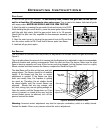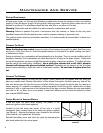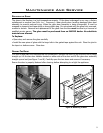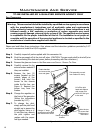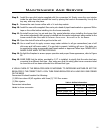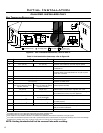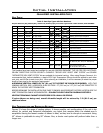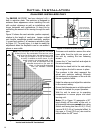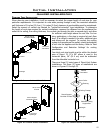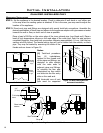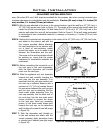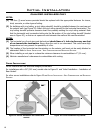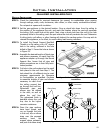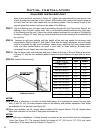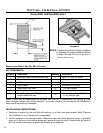
15
Initial Installation
QUALIFIED INSTALLERS ONLY
PLANNING YOUR INSTALLATION:
When planning your installation, it will be necessary to select the proper length of vent pipe for your
particular requirements. It is important to note when passing through a wall, the maximum allowable
wall thickness is 10 inches (25.4 cm), 1 inches (3.8 cm) clearance to combustibles must be maintained.
Select the amount of vertical rise desired for “vertical-to-horizontal” type installations. To determine
the length of vent pipe required for vertical installations, measure the distance from the appliance ue
outlet to the ceiling, the ceiling thickness, the vertical rise through the attic or second story, and allow
Vertical
Termination
Storm Collar
Flashing
Round Support
Box/Wall Thimble
Ceiling Firestop
Pipelength
Pipelength
Cathedral Ceiling
Support Box
Pipelength
Round Support
Box/Wall Thimble
Pipelength
Horizontal
Termination
90° Elbow
for sufcient vent height above the roof line. For two
story applications, a re stop is required at each oor
level. If an offset is needed in the attic, additional pipe
and elbows will be required. To connect the venting
system to the appliance ue outlet, a twist-lock adapter
is built into the appliance at the factory. Refer to ‘Vent
Conguration and Restrictor Settings’ for venting
parameters.
Your total vent pipe length must be within the shaded
area of Figure 12. If a 90° elbow is used in the
horizontal plane, 36” (91.4 cm) must be subtracted
from the allowable horizontal run.
There are three (3) basic types of Direct Vent System
installations. The three (3) types of installations are
shown in Figures 13 through 15.
Figure 13: Common Horizontal Installation.
Figure 14: Common Vertical Installation.
Round Support
Box/Wall Thimble
2 ft (610 mm)
Pipelength
36" (915 mm)
Snorkel
45° Elbow
Figure 15: Common Snorkel Installation.



